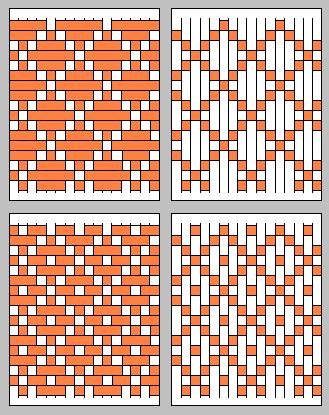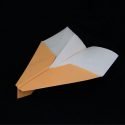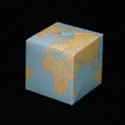Paper Weaving Patterns
Weaving patterns can be simple with a one-up-and-one-down sequence. Add color to spice up the look.
Begin to introduce variations. Instead of one-up-and-one-down, change to two-up-and-two-down. This is still quite simple and can be accomplished by children.
Things become a notch more interesting when you use both patterns simultaneously:
row 1: two-up-and-one-down
row 2: two-down-and-one-up
A diagonal effect is seen when you offset the pattern in subsequent rows. Here:
row 1: two-down-and-one-up
row 2: same as above but offset it by one
Similar to the case above with checkerboard effect, the diagonal effect can be expanded to two-down-and-two-up.

Similar to the case above with checkerboard effect, the diagonal effect can be expanded to two-down-and-two-up.
Weaving by groups of 3 or more also exist. Here, the pattern emerges only if the sample is large enough.
Shown here are patterns with three-up (or three-down) combined with one-down (or one-up)

Really nice patterns can be achieved if you weave in and out in groups of 5. Note that the image on the right is the back side of the image on the left.
This pattern is the same as the one immediately above: namely, it has a diamond shape but with a dot in the middle.

Still more elaborate paper weaving patterns.

- learn how to weave paper mats here and here
- weave baskets or a fish
- read about palm weaving
- read about strip folding
- go to Site Map
- Like Us on Facebook
-
Books with Easy Origami
- Easy Origami: over 30 simple projects by John Montroll
- Origami Fun Kit for Beginners by John Montroll
- My First Origami Kit by Joel Stern
- Easy Origami: A Step-by-Step Guide for Kids by C Alexander & M Meinking
- Fun With Easy Origami (Dover Origami Papercraft)
- Origami: A Step-by-Step Introduction to the Art of Paper Folding by T Cook & S Henry
- Easy Origami For Kids Book Traditional Japanese Folding Papers Overs 20 Projects by J Wish
- Easy Origami for Kids: Over 40 Simple Origami Projects by O Brooks
Please Help
Please help by reporting broken links so that we can fix them. One easy message from you can save us hours and hours of clicking. Thanks!
-
More Origami Diagrams and Instructions…
-
These free origami instructions are made available to you by the paper folding community at large. If you have a diagram you would like to share, or if your diagram is listed here and you wish to have it removed, please Contact Us. Diagrams are intended for personal use. Copyright of the models lie with the origami creators and designers. Please contact the designer and/or creator directly for non-private usage of a model and/or artwork.




















